The World of The Zodiac: Observing the 20th Century’s Global History
Content Warning: The following post discusses racial prejudice and depicts copies of racist caricatures
A Brief Introduction
The Cable and Wireless network system was a vital component in the globalisation and connectivity of Britain, its Commonwealth, and neighbours.
For the network to grow so immensely from its humble beginnings in Cornwall; with the first cable being laid in 1870 connecting Britain to its so called ‘Crown Jewel’ of India, the system had to have a powerful and driven workforce in both Britain and countries abroad to keep the ‘world’ connected.
However, those connecting the world still had to have a means of remaining connected to each other, and this is where ‘The Zodiac’ staff newsletter comes in. The newsletter served as an in-house pamphlet published by the Eastern Telegraph Company and later Cable and Wireless from 1906 to the 1990s, with updates and stories from across the globe with particular focus on international telecommunication stations. It printed articles celebrating the joys, expressing the pains, and discussing the relations of the employees and the people that surrounded them.
The newsletter is a vital product of the history of Cable and Wireless, the people that built it, and the interests and sometimes challenging attitudes held by some of these people throughout Britain’s colonial history. A history of which inseparably intertwines with the cable enterprises and therefore ‘The Zodiac’. The newsletter does however generally serve as a unique source for the study of social history from all perspectives.
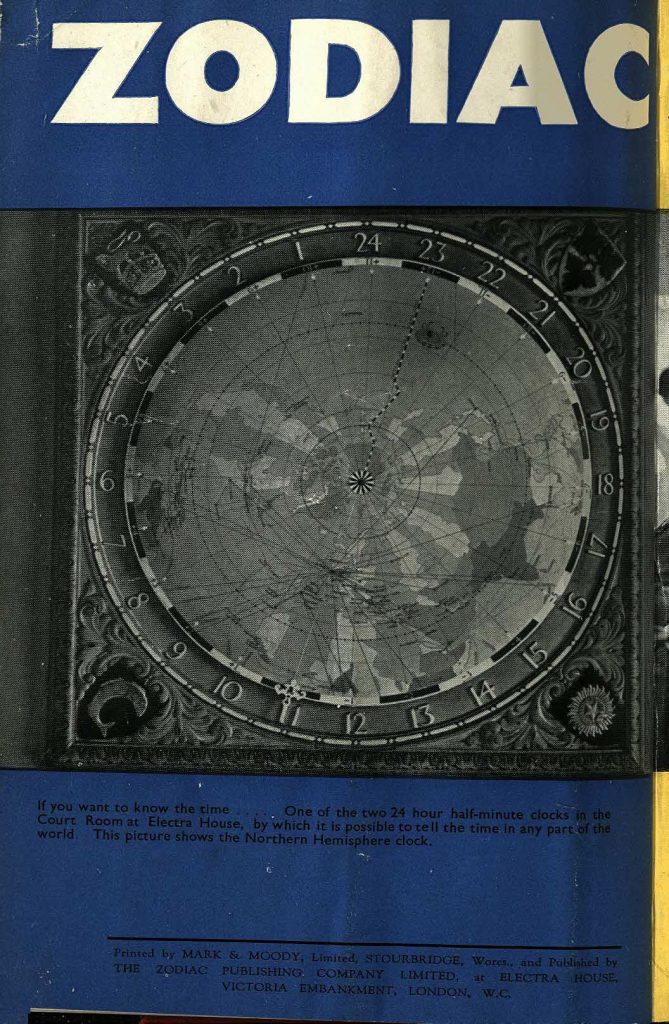
Regardless, this is not an accusatory piece but rather an acknowledgement that history is neither purely good nor bad, a testament to how we can learn about our own histories from an alternative perspective.
Before getting into specific cases and examples within the newsletter, to begin with it is important for us to understand the contextual beliefs and mindsets of much of Western society during the 20th Century. The image to the right is a copy of the backpage of the July 1946 issue, depicting the ‘24 hour clock’, located in the Head Office of Electra House (Cable & Wireless Headquarters in London). Britain holds centre stage as lines connecting to its various international stations sprawl out, showing the times in each location. This clock, while serving a purposeful use in assisting overseas communication, also demonstrates the commonplace mindset of dominion over vast areas of the world. Being kept on display and in the Head Office as an art piece essentially presents the clock as an achievement to be marvelled over; and after all, much of the telecommunication system developed at the time was to simply connect Britain to its empire.
It is also important to keep in mind that those working in international stations would be both British overseas workers as well as people who were employed locally. While there was an element of respect towards local workers, there were comments and attitudes placing these people as subordinates to their European counterparts, with insensitive and belittling language such as ‘the natives’ being commonplace. These attitudes will be discussed in the following sections.
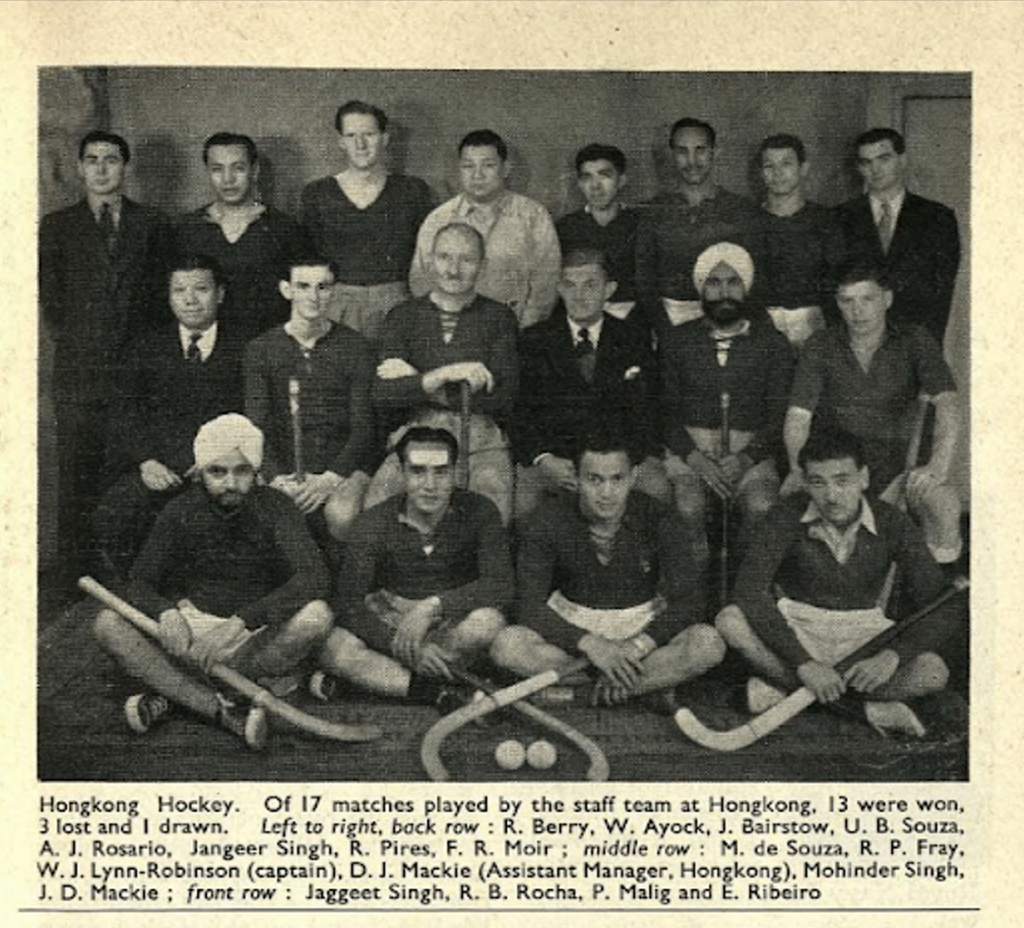
Global Connections: Asia
One example is a photograph entitled ‘Sports News’, which is interesting as it shows a few Indian workers among the Hong Kong staff. This not only depicts the global reach of Cable and Wireless, being able to hire workers from across the Commonwealth, but also the surprising diversity within the telecommunications industry. The fact that British workers were engaging in sports teams with people from a country that had just gained its independence in 1947 shows that there were some levels of acceptance and diversity within the industry
Another example of the global scale of this worker’s newsletter is the following article from volume 40, issue 477, December 1948, entitled ‘Father of a Nation’ by F.M. Lavocah. This article details the death of Muhammad Ali Jinnah, the politician widely regarded as the ‘founder’ of Pakistan, with photographs of the Karachi Training School. The fact that this article details how the Company had workers reporting the news of Jinnah’s death from its base in Pakistan, a former colony of the British empire, and also expresses its sympathies, shows how powerful and global the telecommunications industry was.
Furthermore, this article from volume 41, issue 481, April 1949, also highlights the global reach of the newsletter, as it devoted a regular feature to the large Chinese minority of workers from Eastern stations who read it, whilst also acknowledging the 56 other nationalities who enjoyed the newsletter. The significant page space given to explaining the basics of the Chinese alphabet also shows a level of globalisation and interaction that the telegraphy industry brought to different people
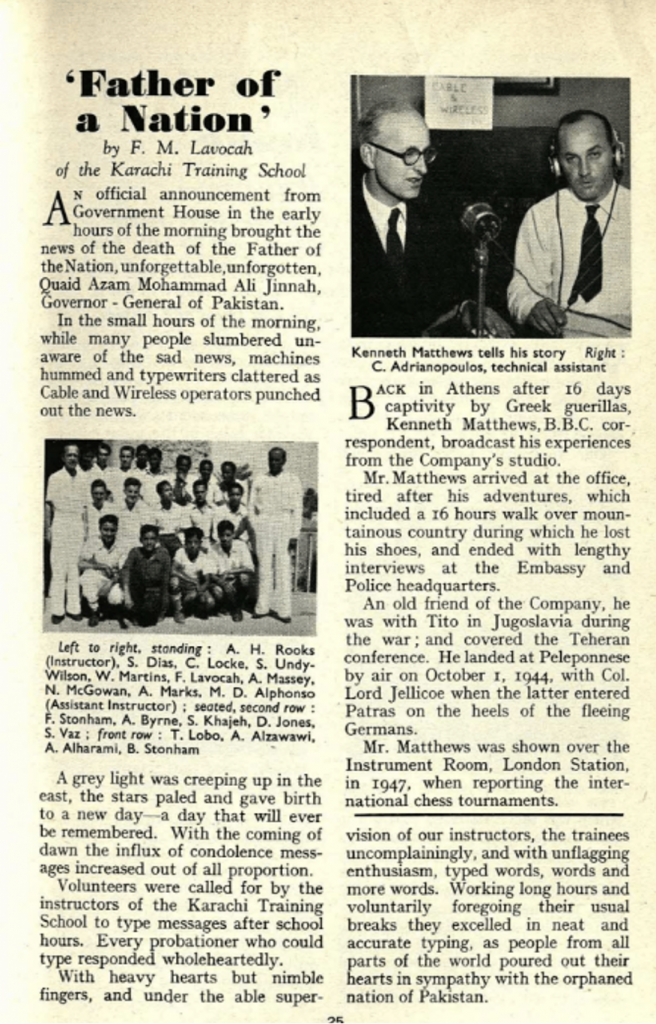
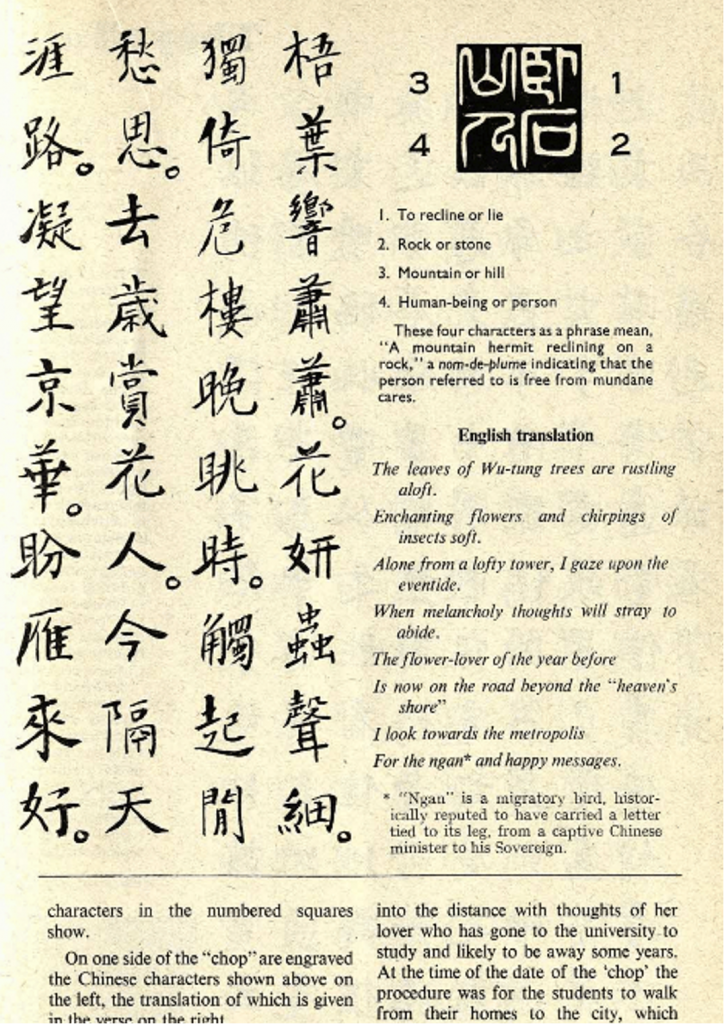
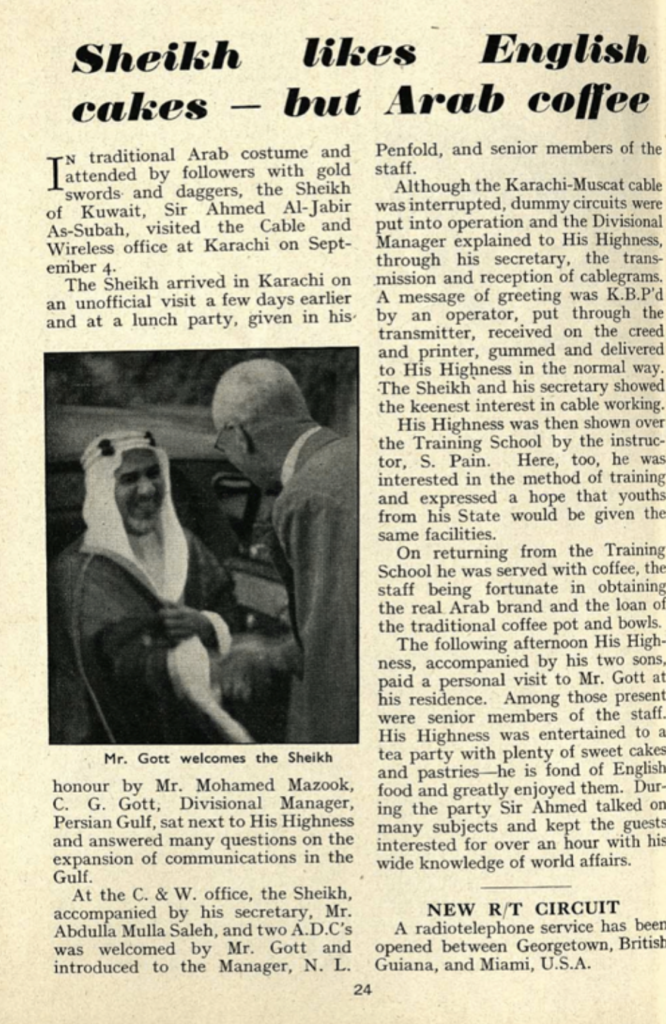
Problematic Histories
However, ‘The Zodiac’, being produced by a 20th Century Western eye, also has some problematic elements that should be addressed. The common use of racially insensitive language and article titles reflect the colonial undertones of the telegraph industry, as many of these stations were established in colonies or former colonies of the British empire, and many of the station workers were themselves employed from their country.
The article depicted to the right clearly highlights the insensitive language used when speaking about non-white leaders and workers alike, infantilising and belittling their politics, cultures, and lives. In fact, the article engages in some insensitive humour, rhyming the word ‘Sheikh’, which refers to a significant political and religious position in Arab politics, with ‘cakes’.

The magazine also harbours more explicit forms of racial insensitivity, as can be seen by this caricature design to the right. In the context of the Company’s overseas workforce, it is evident that, in this case Chinese people, were looked down on by western workers and writers of ‘The Zodiac’. What is especially poignant is the reality that these were made in reference to their co-workers. The fact that this can be found in articles of the 20th century demonstrates the attitudes of dominion, superiority, and control that often coincided with the international telecommunications industry.
Ultimately, both ‘The Zodiac’ and the 20th century telegraphic communications industry have an intertwined history with imperialism and western-centricism, as evidenced by the wide range of articles that spanned workers’ stories from across the many worldwide telegraph stations, and that this is reflected in the outdated language and pictures used in the newsletter.
However, it is also important to note that ‘The Zodiac’ is undoubtedly one of the richest examples of how technological change and advancement was responsible for the rapidly increasing rate of globalisation in the 20th Century, and the human element behind it all.
Being a product of its time, however, does not excuse the newsletter from criticism. As such the observation of a variety of perspectives on important sources such as ‘The Zodiac’ is a necessary, albeit challenging, and perhaps painful way of truly approaching stories from our histories.
We cannot celebrate the leaps and bounds in international connections and development if we do not acknowledge the uncomfortable facts of history woven into our pasts.
Written by Lottie Holt & Haseeb Salemi, second-year BA History students at Exeter University.
“We have a particular interest in writing about colonial global history, in conjunction with many of the current efforts both in the world of academia and wider society to ‘decolonise’ our taught views on the history of Britain and its international relations, to encourage a more widely nuanced way of viewing the world”.
If you would like to learn more about the PK Porthcurno Collection please visit: PK Online Collections (pkoc.co.uk) | PKPorthcurno Collections
